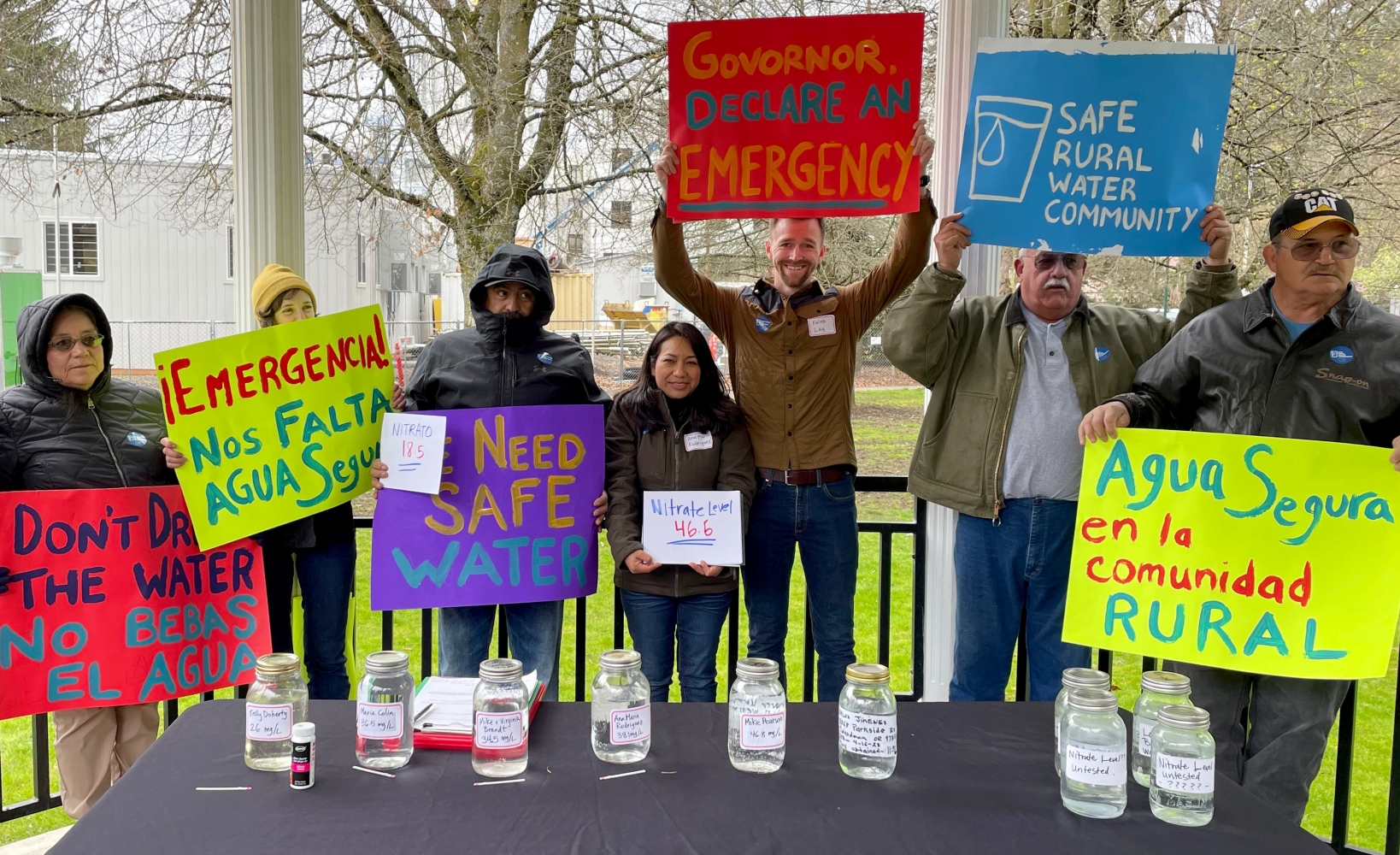

Published on: 11/17/2025
This news was posted by Oregon Today News
Description

More than 30 years after Oregon officially declared the Lower Umatilla Basin’s groundwater polluted, the state is on the verge of adopting rules to monitor nitrates in the area.
The Oregon Department of Agriculture opened the public comment period for proposed rules for the basin on Oct. 31. Should the state adopt them, the rules would require many farmers in western Umatilla County and northern Morrow County to test their own fields for nitrates and maintain the records.
Nitrates are chemicals often found in fertilizers and wastewater, and consuming high amounts of them can lead to illnesses like cancer and thyroid disease.
Oregon declared the Lower Umatilla Basin a groundwater management area in 1990, connecting the groundwater contamination to nitrate use in the agriculture industry. But the state has never pinpointed exact sources or required farmers to monitor the run-off from their fields. During most of that time, the state relied on a local committee to produce voluntary measures for farmers to follow, as nitrate levels in local wells continued to worsen.
State officials said the proposed rules are a firm step toward reversing that trend. But the rules are already proving to be contentious, with some in the agricultural community saying they go too far, and advocates for people with polluted drinking water saying they don’t go far enough.
The rules would require basin farmers to test their soil for nitrogen before planting crops, and to develop nitrogen management plans that are certified by an agronomist.
These requirements would only apply to large farms of more than 1,000 acres to start, with smaller farms phased in later. Farmers would hold onto their own data and plans, similar to records farmers keep for pesticide applications. The state wouldn’t inspect farmers’ nitrate measurements until after the rules are in effect for three years.
Isaak Stapleton, the natural resources division director for ODA, explained the concept behind the plan.
“We wanted to make sure that we left a lot of the control for the management decisions on-farm in growers hands,” he told the Oregon Board of Agriculture in September. “We’re not growers. We don’t know their operations or their crops.”
Stapleton was a part of an advisory committee that helped draft the new rules for the basin. In an interview, he cautioned against expecting quick results, even if the rules are effective.
“I don’t want people to get the impression that these rules are going to fix something overnight or by next year,” he said. “It took decades for that nitrate to get into the groundwater at the levels that it’s at, and by us limiting and eliminating that slow trickle in, over time, we can see improvements.”

When he was asked to join the same advisory committee as Stapleton, Kaleb Lay said he was initially optimistic.
Lay is the director of policy and research for Oregon Rural Action. The La Grande-based nonprofit has organized basin residents to put pressure on the state to take a tougher stance on nitrate pollution. Oregon Rural Action’s approach has occasionally put it at odds with state leaders. The organization pulled its support for a statewide groundwater bill earlier this year after legislators softened some of the bill’s language.
Despite his early hopes, Lay said the nitrate rules committee had heavy representation from the agriculture industry. The results, he said, didn’t provide firm enough regulations, besides asking farmers to make management plans.
“It’s incredibly frustrating,” Lay wrote in an email. “Once again, the state bowed to industry pressure to let industry regulate itself, essentially on a voluntary basis. It’s a fresh coat of paint on the same approach that has failed to rein in nitrate pollution for the last 35 years.”
The agriculture industry has its own critiques.
Another advisory committee member, Justin Green, is the executive director of Water for Eastern Oregon, a coalition of agricultural producers and processors in the basin focused on the local nitrate issue. He said the group’s members were largely satisfied with the rules. But some did have concerns about the requirement for deep soil testing, which he said was not representative of impacts to groundwater.
“Without a strong scientific understanding of soil dynamics, irrigation management (and) crop root depth, those sample results are likely to be misinterpreted and not provide an accurate assessment of conditions,” Green said.
Stapleton said hearing complaints from advocates who often disagree showed the rules were on the right track.
“We’re right down the middle, which I feel like that’s probably where we need to be,” he said. “If both sides are criticizing where we’re at and have issues like this, this seems like a good spot for us.”
The public comment period will remain open until Dec. 22. ODA will hold an in-person hearing in Boardman on Dec. 15 and a virtual hearing the following day.
News Source : https://www.opb.org/article/2025/11/17/nitrate-monitoring-rules-lower-umatilla-basin/
Other Related News
11/18/2025
EUGENE Three of the prior four meetings in the most-contested rivalry in college basketba...
11/17/2025
Matt Bunch has been appointed to the Oregon House to fill the seat of Christine Drazan
11/17/2025
Its time to grab your tickets and check to see if youre a big winner The Powerball lottery...
11/17/2025
Dear Annie I have been dating an amazing woman for about six months She is smart kind funn...
11/17/2025









